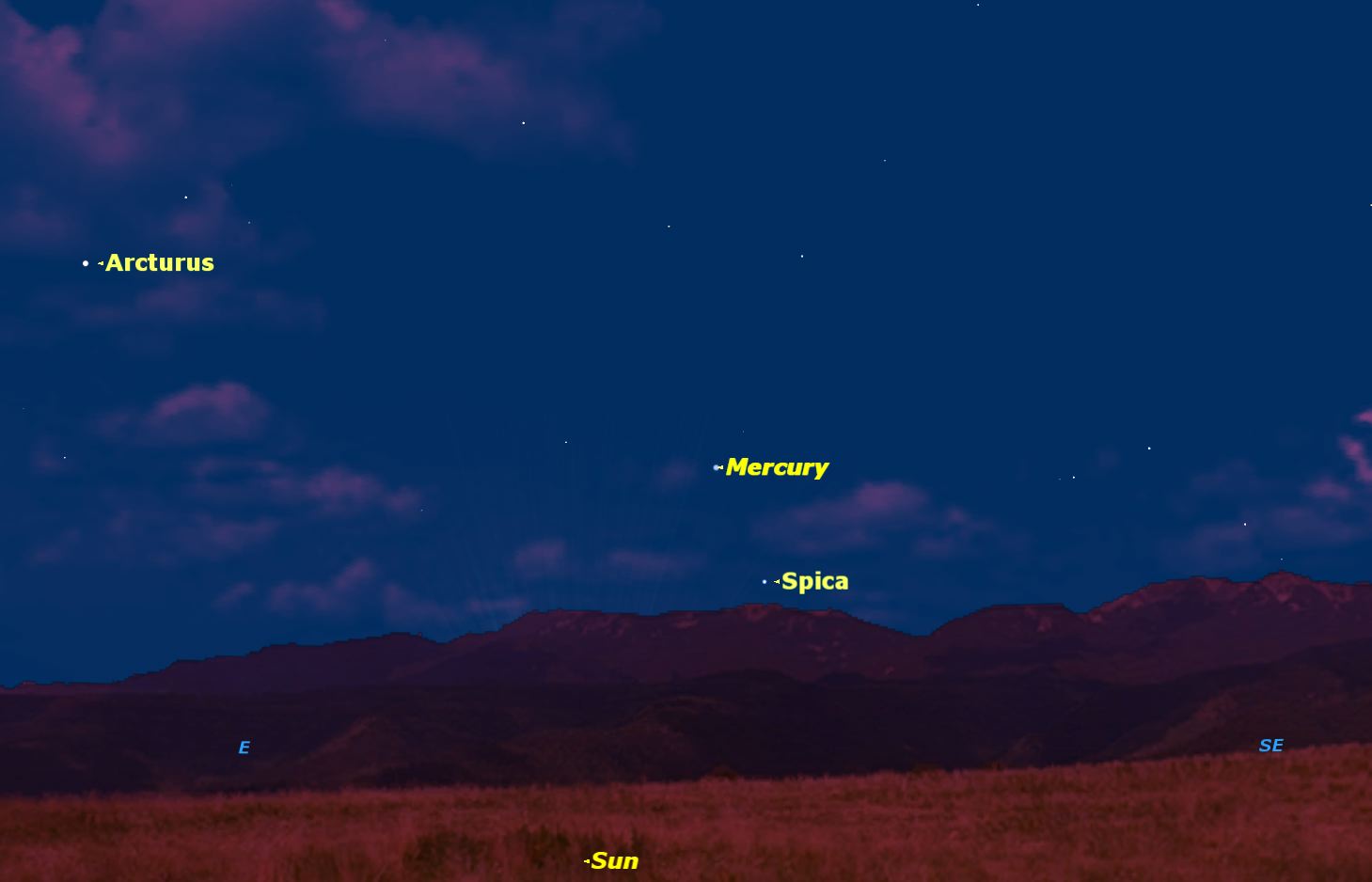See Elusive Planet Mercury Before Dawn Saturday

Although Mercury is one of the brightest objects in the sky, even the most dedicated stargazers rarely see the innermost planet because it is usually so close to the sun.
This week is one of the rare opportunities when Mercury is relatively easy to spot. It will mean getting up before the sun, but once spotted, you will be able to follow Mercury until it is drowned out by daylight.
All apparitions of Mercury are not created equal. Because of the tilt of the ecliptic — the path that the planets follow across the sky — the inner planets, Mercury and Venus, are much higher in the sky at some times than others. The best times to see Mercury, if you live in the Northern Hemisphere, are March or April evenings and October or November mornings.
This year, Mercury reaches greatest western elongation from the sun on Saturday (Nov. 1). This means that Mercury is as far as it can get in a westward direction from the sun as it rises over the eastern horizon. I’ve found the best time to spot Mercury is about half an hour before sunrise.
The easiest way to find Mercury is to sweep just above the horizon with binoculars. The brightest star on the eastern horizon will be Arcturus. Mercury will be below Arcturus and well to its right. Once spotted in binoculars, you should have no trouble locating it with your unaided eyes.
If you point a tracking telescope on Mercury, you will be able to continue to observe it as it climbs in the sky, followed by the sun. This is the best opportunity to detect the faint markings on Mercury’s surface, which are usually lost because of Mercury’s brilliance and low altitude. Seen higher against a bright sky, these low contrast markings become more evident.
Even so, they will challenge even experienced observers because of Mercury’s small angular size. The best most of us can hope to see in a telescope is Mercury’s phase: like Venus and the moon, Mercury goes through a series of phases. On Saturday, it will look like a miniature "last-quarter moon."
Get the Space.com Newsletter
Breaking space news, the latest updates on rocket launches, skywatching events and more!
This article was provided to SPACE.com bySimulation Curriculum, the leader in space science curriculum solutions and the makers of Starry Nightand SkySafari. Follow Starry Night on Twitter @StarryNightEdu. Follow us @Spacedotcom, Facebookand Google+. Original article on Space.com.
Join our Space Forums to keep talking space on the latest missions, night sky and more! And if you have a news tip, correction or comment, let us know at: community@space.com.

Geoff Gaherty was Space.com's Night Sky columnist and in partnership with Starry Night software and a dedicated amateur astronomer who sought to share the wonders of the night sky with the world. Based in Canada, Geoff studied mathematics and physics at McGill University and earned a Ph.D. in anthropology from the University of Toronto, all while pursuing a passion for the night sky and serving as an astronomy communicator. He credited a partial solar eclipse observed in 1946 (at age 5) and his 1957 sighting of the Comet Arend-Roland as a teenager for sparking his interest in amateur astronomy. In 2008, Geoff won the Chant Medal from the Royal Astronomical Society of Canada, an award given to a Canadian amateur astronomer in recognition of their lifetime achievements. Sadly, Geoff passed away July 7, 2016 due to complications from a kidney transplant, but his legacy continues at Starry Night.










